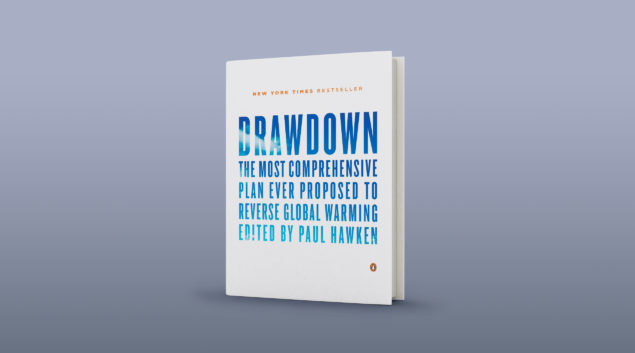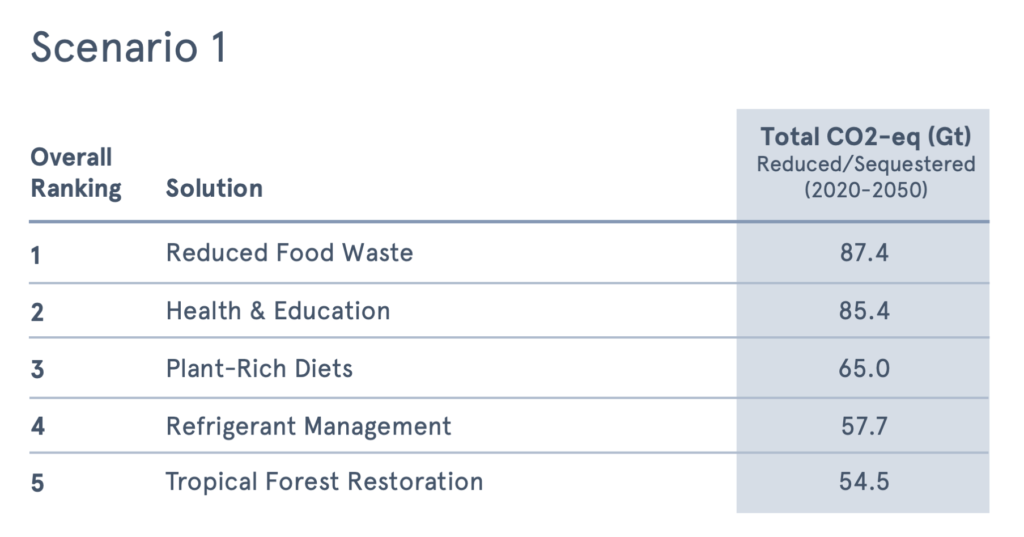
As part of our Nordic Sustainability book club, The Overbooked Consultants Club, our plan is to read everything from social justice, economics, and climate change to corporate culture, change management, and self-help books. And probably a lot in between.
Today, we’ll discuss Drawdown: The most comprehensive plan ever proposed to reverse global warming. Quite the title, and while perhaps a bit brash (Paul Hawken’s own admission) this is exactly what the book sets out to do: present the reader with a list of the 100 most substantive ways to reverse global warming. Reverse is of key importance here, as the book does not intend to show how to merely halt or slow down global warming. Rather, it presents solutions that put the global community on the path towards continuously decreasing greenhouse gas levels in the atmosphere.
What does ‘drawdown’ mean, exactly?
“In atmospheric terms drawdown is the point in time at which greenhouse gases peak and begin to decline on a year-to-year basis.”
With ‘drawdown’ as the guiding star, the team behind the book set out to identify and model the solutions most apt to achieve a steady decline in greenhouse gases. When I write ‘team’, this might incur the mental image of a small team in a war room type of setup. However, in reality, the team consisted of 70 individuals across 22 countries – 40% of which were women. Add to that a 120-person Advisory Board, featuring a diverse community of geologists, engineers, agronomists, politicians, writers, climatologists, biologists, botanists, financial analysts – and the lists goes on. The result of their work is a comprehensive list across the categories of energy, food, women and girls, buildings and cities, land use, transport, materials, and ‘coming attractions’. More on those later.
A note on language and the power of storytelling
First a brief linguistic detour, as the book boasts a section dedicated to the language of climate science. As someone trained in language and literature, I’m happy to admit that this was a very welcome surprise. Clarifying exactly which terms are utilized and what they mean is an incredible help to the reader, especially as the intention of Drawdown is to make it accessible to all readers – not just people with extensive prior knowledge within the field. Taking the example of “negative emissions,” the team explains that unless you already know what this means, the term holds no meaning in itself. “Imagine a negative house, or a negative tree. The absence of something is nothing.” In addition, Hawken notes their choice to avoid military language such as the war on carbon and slashing emissions, which I think most of us who have ever written anything climate-related are guilty of. Hawken reasons that climate is not an enemy, it’s a “function of biological activity on earth, and physics and chemistry in the sky. It is the prevalent weather conditions over time … The goal is to come into alignment with the impact we are having on climate by addressing the human causes of global warming and bringing carbon back home.”
Drawdown presents more than science-backed, global warming reversing solutions. Those chapters are interspersed with essays and book excerpts on topics such as Alexander von Humboldt identifying climate change in 1800 (by Andrea Wulf), what we eat (mostly “food-like substances” and how it affects our bodies and soil (by Michael Pollan), Yacouba Sawadogo – “the man who stopped the desert” (by Mark Hertsgaard), a call for caring for our common home (by Pope Francis), Gleason vs. Clements and forest management (by Janine Benyus) and more. These “interruptions” serve as delightful pauses from the rigorous scientific and engineering analyses that, while the backbone of the book and highly recommendable, may not be readable in one sitting to the majority of readers.
More on the solutions – and an update
The book differentiates between “regrettable” solutions and “no-regrets” solutions. The former – and thankfully there are only a handful of those in the book – are solutions with spillover effects that are detrimental to human and planetary health – yet necessary to reduce greenhouse gas emissions for a period of transition. The rest – the “no-regrets” solutions – are initiatives that we would want to implement regardless of their footprint reduction abilities, as they carry multiple benefits for society and the environment. An example of this would be ‘Educating Girls’: not only do women with more education have fewer and healthier children, but a 2013 study also concluded that educating girls is “the single most important social and economic factor associated with a reduction in vulnerability to natural disasters.”
The chapters include solutions within Energy, Food, Women and girls, Buildings and cities, Land use, Transport, Materials, and Coming Attractions. The final category, Coming Attractions, features solutions that are on the horizon, and while they may not come to fruition, they demonstrate ingenuity and gumption from a selection of very committed individuals. While the book absolutely holds outstanding merit for its laudable content, the very shortlist of solutions is now out of date. Published in April 2017 (and we have no qualms admitting that we: 1) did not read it until 2021, and 2) have taken until 2022 to get this book review done), the Drawdown book was the inaugural work from the team outlining climate solutions. Drawdown has since conducted ongoing reviews, the latest of which outlines the Climate Solutions for a New Decade, published in 2020.
Without going too much into detail on the shortlist of most impactful – from a CO2-eq reduction/sequestering potential perspective – solutions in the review from 1-5 are:

(Page 86 https://drawdown.org/sites/default/files/pdfs/TheDrawdownReview–2020–Download.pdf)
Interestingly, where ‘Refrigerant Management’ ranked 1st in 2017, in the most recent review from 2020, it comes in fourth. Despite the drop in the list, better management of refrigerants is vital as the hydrofluorocarbons (HFCs) found in both AC and refrigerators have a much higher global warming potential (GWP) than carbon dioxide.
In 2017, ‘Wind Turbines’ came in second. Now, they’ve been renamed ‘Onshore Wind Turbines’ and reside in 6th place. Estimated to be one of the world’s cleanest energy sources by 2030, the wind turbines naturally continue to rank high on Drawdown’s list.
‘Reduced Food Waste’ has risen from third to first place, and ‘Plant-Rich Diets’ has also moved up a spot, underlining the importance of a shift towards diets consisting of less animal-based products. It’s important to take note here, however, that food waste holds somewhat more CO2-eq sequestering potential than what the shift towards plant-based diets does, emphasizing the need for a comprehensive transformation of the global food system as well as wasteful practices in food retail.
Recommendation for a thorough deep dive in climate solutions
In summation, Drawdown is as clear as it is comprehensive (and its organization and reference guide helps with the latter) and provides the reader with an overview of the state of the climate that is difficult to otherwise come by in just one collected work. In addition, its insistence on using language that accommodates non-experts and laymen makes it approachable to just about anyone without much prior knowledge of neither the state of global warming and climate change, nor the solutions to mitigate both.
As climate communication continues to be a minefield with a large portion of deliberate obfuscation, Drawdown is delightfully accessible and clear in its communication. All in all, it serves as an excellent reference book for anyone interested in learning more about where society could (or should!) head without politics, astroturfing, or vested interests.


